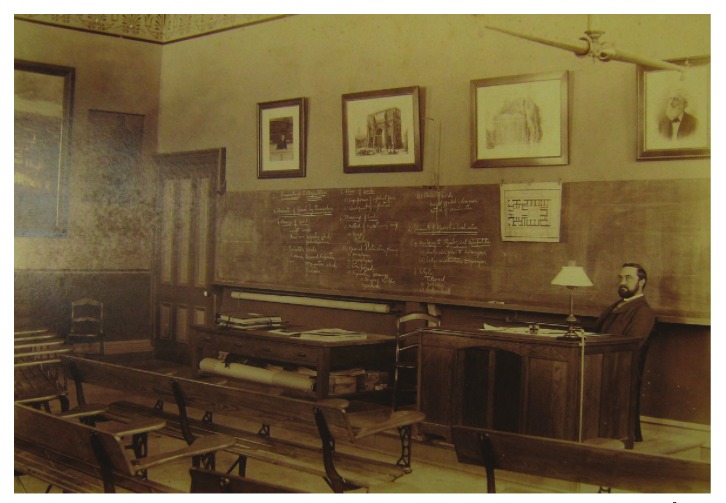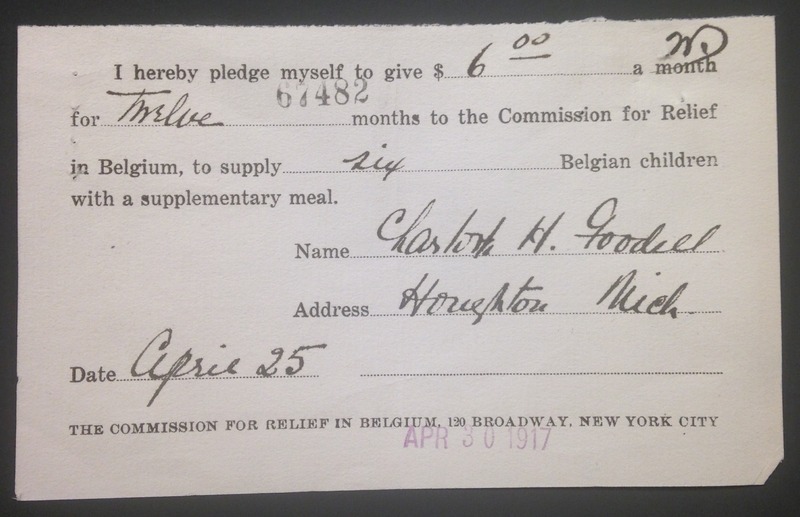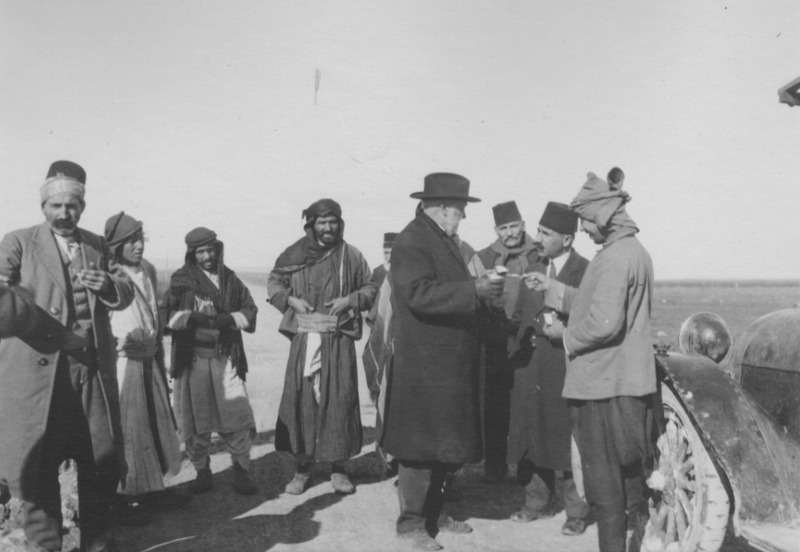Francis W. Kelsey
One of the earliest wartime activities on campus revolved around international humanitarian aid. Already in the fall of 1914, student organizations and faculty organized mass meetings and concerts to help the “sufferers of war.” There was one effort that grew from being an idea first articulated in an Ann Arbor home to a statewide effort that received national attention; this was the Dollar-a-Month Club. Circulating pamphlets and canvassing homes, the organization asked Michiganders to donate one dollar a month, which would provide a meal a day for a Belgian child.
The Dollar-A-Month Club was the idea of Francis W. Kelsey, a professor of Latin Language and Literature. Kelsey joined the University of Michigan faculty in 1889 and taught in the Department of Archaeology until his death in 1927. Kelsey was an accomplished scholar in his field and was honored as such with the Kelsey Museum of Archaeology in 1953. What is often forgotten is that Kelsey also was a humanist of great repute. This side of him came to the fore during World War I. While in the student newspapers, Kelsey’s name is associated to international relief efforts from the fall of 1914 onward, his most organized and systematic undertaking took shape as the Dollar-A-Month club in 1917. In January of 1917, Kelsey recruited members to a committee that would contribute to Herbert Hoover’s Belgian Relief Committee. The Ann Arbor committee introduced the idea of a monthly small commitment specifically aimed at feeding Belgian Children to the governor of the state Albert E. Sleeper, who agreed to become the head of a statewide effort. For more on Kelsey’s efforts for the CRB click here.
Kelsey continued to be interested in relief work after the war. He shifted his attention to the Near East. Combining his interest in ancient archaeology and humanitarian concern, Kelsey organized an expedition that took him and his family to Istanbul and from their overland across what is today Turkey, Syria, Lebanon, Israel and Palestine. During his travels he visited YMCA, Red Cross and Near East Relief camps, orphanages, and rescue homes that were taking care of Armenian refugees, mainly children. He had George Swain, staff photographer of the University of Michigan take photos and he himself wrote reports on the aftermath of the war in the Middle East.



